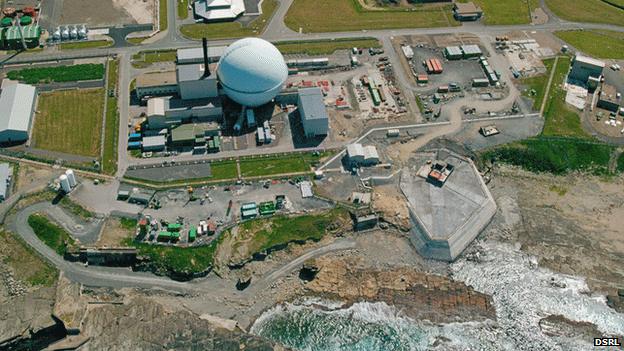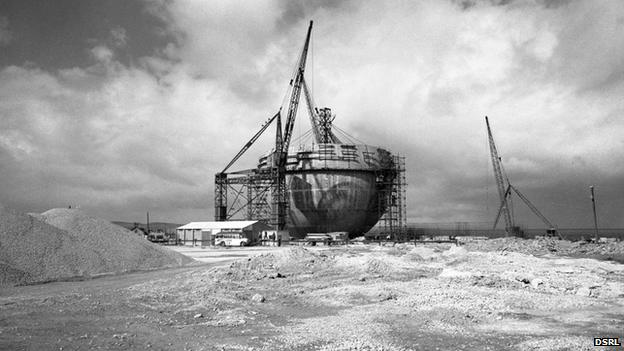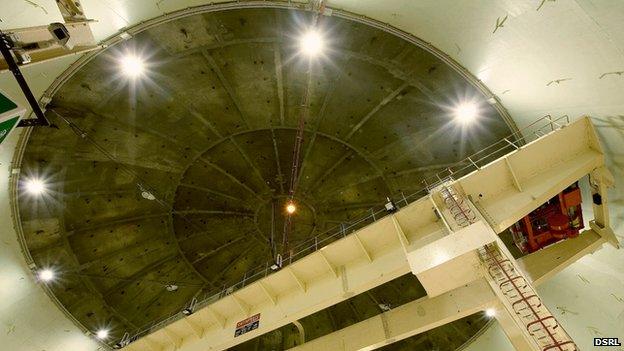Dounreay dome demolition could start in 2022
- Published

The dome has been a feature of the north Caithness coast for decades
Work to demolish the landmark Dounreay Fast Reactor dome could start in seven years' time.
The structure, also known as the sphere and the golf ball, has been a feature of the north Caithness coast for almost 60 years.
The Nuclear Decommissioning Authority (NDA) has recommended that the DFR be decontaminated by 2022 so it can then be demolished.
There were previous plans to retain the dome.
Historic Scotland had considered listing the building so that it would be conserved.

The sphere was constructed in the 1950s
In 2007, Dounreay Site Restoration Limited (DSRL), the company that manages the site, released the results of public consultation on future uses for the dome.
Suggestions included turning it into a hotel, museum and even a nightclub.
However, because the structure is contaminated with low levels of radioactivity and due to high maintenance costs, it was decided to demolish it.

The ceiling of the dome's interior
In 2011, plans to repaint the dome at a cost of £500,000 were cancelled.
The repaint had been done every 10 years to protect the dome's metal work.
DSRL said that following an assessment the steel was deemed thick enough to last as a protection until the reactor inside was dismantled.

There was a suggestion that the landmark structure be turned into a nightclub
The year 2022 is among planned "milestones" in the NDA's latest annual business plan for DSRL.
The bulk of the plan sets out targets for the next 12 months of the wider programme to clean up and demolish Dounreay, a former experimental nuclear power site.
The dome is one of the most recognised features of Dounreay.
In the 1950s, a sphere was considered to be the best shape of structure to contain a gases from the reactor, if there was a breach.
The sphere is made up of plates of steel that were welded into the shape of a sphere.
In the 1960s, it featured in a series of special edition stamps promoting Britain's "white heat of technology".